India is home to a stunning variety of sarees, including renowned styles like Banarasi, Kanjeevaram, Chanderi, and Sambalpuri. Each saree offers a unique expression of culture and fashion, allowing you to showcase your style for any occasion. Whether you’re dressing for a wedding, festival, or casual outing, the type of saree you choose—be it soft silk, Paithani, or Patola—can reflect your mood and personal aesthetic.
From luxurious pattu and silk sarees favored in South India to elegant Chanderi and Ikat sarees, the options are endless. Each saree type carries its own history and significance, making it essential to select the right one based on the occasion and regional traditions.
List of Popular Saree Types in India
- Mysore Silk Sarees: Originating from the royal state of Mysore, these sarees are known for their luxurious feel and sheen, making them ideal for weddings and formal events.
- Pochampally Sarees: Hailing from Andhra Pradesh, Pochampally sarees are recognized for their vibrant ikat designs, often featuring peacock motifs.
- Chanderi Sarees: Lightweight and elegant, these sarees from Madhya Pradesh are perfect for both festive occasions and everyday wear, known for their sheer texture.
- Chiffon Sarees: Available in a wide range of colors and prints, chiffon sarees are easy to maintain and versatile for weddings and casual gatherings.
- Georgette Sarees: These lightweight sarees can be dressed up or down, making them suitable for various occasions while providing comfort and style.
- Art Silk Sarees: Luxurious yet affordable, art silk sarees made from rayon blends are perfect for festive occasions and weddings.
- Satin Sarees: Smooth and stylish, satin sarees offer a modern twist on tradition and are ideal for special events.
- Raw Silk Sarees: Known for their unique texture and strength, raw silk sarees are often embellished with beautiful embroidery, making them a favorite for festive occasions.
- Kanjeevaram Silk Sarees: Renowned across India, these sarees are cherished for their intricate designs and are often passed down as family heirlooms.
- Net Sarees: A contemporary choice for the modern woman, net sarees are lightweight and can be adorned with embroidery, suitable for both bridal wear and casual outings.
- Bengali Sarees: The traditional atpoure shari features a white body with a striking red border, reflecting the cultural heritage of Bengal.
- Maharashtrian Nauvari Sarees: Draped in a dhoti style, the nauvari saree offers a unique twist and is often worn during traditional ceremonies.
- Seedha Pallu Sarees: Common in Uttar Pradesh, Gujarat, and Odisha, this style features a pallu that drapes from back to front.
- Telangana and Andhra Pradesh Sarees: The modern nivi style and traditional kappulu showcase the region’s diverse saree culture.
- Mekhela Chador: This unique two-part saree from Assam features a sarong-like bottom and a draped upper section.
- Pinkosu Sarees: Ideal for hot weather, this traditional Tamil Nadu saree is designed for comfort and style.
- Halakki Vokkaliga Style: This unique draping from Karnataka showcases practicality and ease of movement for daily activities.
- Kunbi Sarees: Worn by tribal women in Goa, this simple yet functional saree is ideal for agricultural work.
Sarees by Region
Northern and Central India:
- Banarasi (Uttar Pradesh)
- Pattu (Himachal Pradesh)
- Chanderi (Madhya Pradesh)
Eastern India:
- Tant (West Bengal)
- Sambalpuri (Odisha)
- Mooga Silk (Assam)
Western India:
- Paithanpattu (Maharashtra)
- Patola (Gujarat)
- Bandhani (Gujarat)
Southern India:
- Mysore Silk (Karnataka)
- Kanchipuram Silk (Tamil Nadu)
- Uppada Silk (Andhra Pradesh)
Choosing the Right Saree
With such a wide array of sarees to choose from, consider these three criteria:
- Personal Style: Select a saree that resonates with your personality. Avoid trends that don’t suit you, and instead, embrace what feels right.
- Occasion: Match your saree to the event. A simple cotton saree might not be suitable for a grand wedding, while an elaborate embroidered saree may be too much for a professional setting.
- Material: Different fabrics cater to various body types and climates. Choose lightweight materials for comfort and drape, ensuring you feel fabulous all day long.
Each saree style reflects the cultural narratives and histories of its region, making it a beautiful representation of Indian heritage. Whether for a grand celebration or a casual gathering, the saree remains a timeless choice for every woman.
FAQs About Sarees
What is the best type of saree?
Choosing the right saree depends on your personality and the occasion. Silk sarees are often preferred for weddings, while cotton sarees are great for everyday wear.
Which saree is most popular?
Signature sarees vary by region, but Kanjeevaram silk sarees and Banarasi sarees are particularly renowned across the country.
What type of saree is ideal for women?
Lightweight fabrics are best for all-day wear, providing both comfort and style. Silk sarees enhance elegance, while cotton options keep you cool.



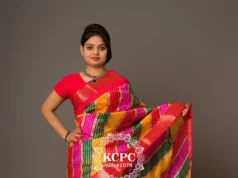
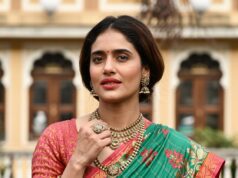
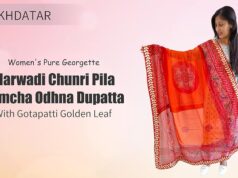
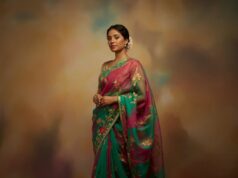
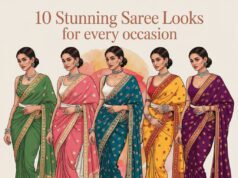





[…] Explore the Diverse Types of Sarees Across India […]